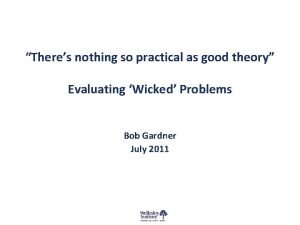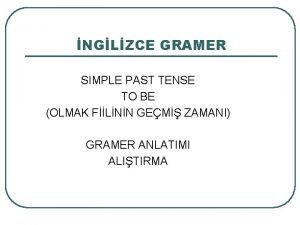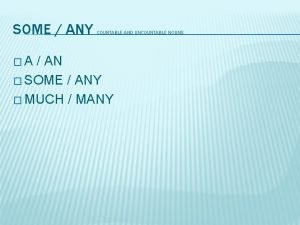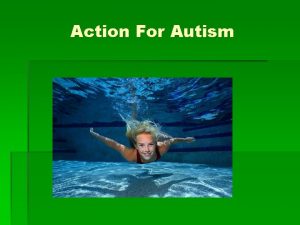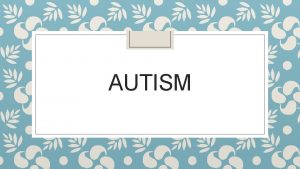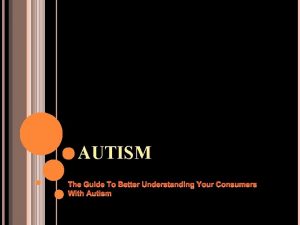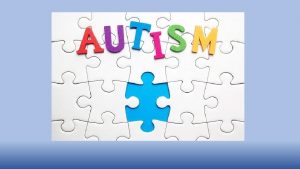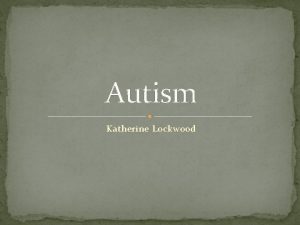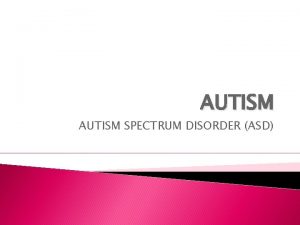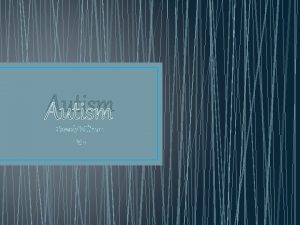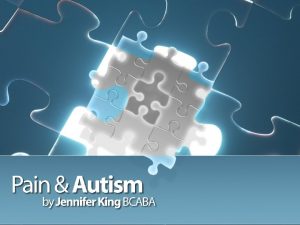AUTISM Overview What is Autism Is there more



























- Slides: 27

AUTISM

Overview What is Autism? Is there more than one type of Autism? What causes Autism? How is Autism diagnosed? What are the characteristics of Autism? What are the most effective approaches to treating Autism? Is there a cure?

WHAT IS AUTISM? Very complex, often baffling developmental disability First described by Leo Kanner in 1943 as early infantile autism “Auto” – children are “locked within themselves. ” For next 30 years, considered to be an emotional disturbance

WHAT IS AUTISM? 3 categories for autism in IDEA? Today, autism is a severe form of a broader group of disorders These are referred to as pervasive developmental disorders (later) Typically appears during the first 3 years of life

WHAT IS AUTISM? Very likely neurological in origin – not emotional, not the refrigerator mom Prevalence is 2 -6/1000 individuals (1/2 to 1 ½ million affected) 4 times more prevalent in boys No known racial, ethnic, or social boundaries No relation to family income, lifestyle

WHAT IS AUTISM? Autism impacts normal development of the brain in areas of social interaction and communication skills. Difficult to communicate with others and relate to the outside world. Occasionally, aggressive and/or selfinjurious behavior may be present.

WHAT IS AUTISM? May exhibit repeated body movements (hand flapping, rocking). Unusual responses to people Attachment to objects Resistance to change in routine Sensory sensitivities

WHAT ARE THE TYPES? Actually, the “umbrella” heading is Pervasive Developmental Disorder (PDD). Autism is one of the 5 PDDs. All have commonalities in communication and social deficits Differ in terms of severity

1. Autistic Disorder Impairments in social interaction, communication, and imaginative play. Apparent before age 3. Also includes stereotyped behaviors, interests, and activities

2. Asperger’s Disorder Impairments in social interactions, and presence of restricted interests and activities No clinically significant general delay in language Average to above average intelligence

3. Pervasive Developmental Disorder – Not Otherwise Specified (PDD-NOS) Often referred to as atypical autism Used when a child does not meet the criteria for a specific diagnosis, but there is severe and pervasive impairment in specified behaviors

4. Rett’s Disorder Progressive disorder which, to date, has only occurred in girls. Period of normal development and then the loss of previously acquired skills Also loss of purposeful use of hands, which is replaced by repetitive hand movements Beginning at age of 1 -4 years

5. Childhood Disintegrative Disorder Normal development for at least the first 2 years Then significant loss of previously acquired skills

Conclusions on Types Autism is a spectrum disorder This means that symptoms and characteristics can present themselves in wide variety of combinations, from mild to severe Autistic individuals can be very different from each other “Autism” is still commonly used to refer to any of the 5 PDDs

What causes (and doesn’t cause) autism? Good agreement in general that autism is caused by abnormalities in brain development, neurochemistry, and genetic factors Bettleheim’s theory of psychogenesis?

How is Autism Diagnosed? No definitive medical test Team uses interviews, observation, and specific checklists developed for this purpose. Team might include neurologist, psychologist, developmental pediatrician, speech/language therapist, learning consultant, etc. Must rule out MR, hearing impairment, behavior disorders, or eccentric habits

CHARACTERISTICS 1. 2. 3. 4. 5. 6. Communication/Language Social Interaction Behaviors Sensory and movement disorders Resistance to change (predictability) Intellectual functioning

1. Communication/language Broad range of abilities, from no verbal communication to quite complex skills Two common impairments: A. Delayed language B. Echolalia

A. Delayed language 50% of autistic individuals will eventually have useful speech (? ) Pronoun reversal: “You want white icing on chocolate cake. ” Difficulty in conversing easily with others Difficulty in shifting topics Look away; poor eye contact Facilitated communication? ? ?

Elements of Facilitated Communication 1. 2. 3. 4. 5. 6. Physical Support Initial training/introduction Maintaining focus Avoiding competence testing Generalization Fading

B. Echolalia Common in very young children (Age 3) Immediate or delayed (even years) Is there communicative intent with echolalia?

2. Social Interaction One of hallmarks of autism is lack of social interaction 1. Impaired use of nonverbal behavior 2. Lack of peer relationships 3. Failure to spontaneously share enjoyment, interests, etc. with others 4. Lack of reciprocity Theory of mind?

3. Behaviors Repetitive behaviors, including obsessions, tics, and perseveration Impeding behaviors (impede their learning or the learning of others) Will need positive behavior supports A. Self-injurious behavior B. Aggression

4. Sensory and movement disorders Very common Over- or under-sensitive to sensory stimuli Abnormal posture and movements of the face, head, trunk, and limbs Abnormal eye movements Repeated gestures and mannerisms Movement disorders can be detected very early – perhaps at birth

5. Predictability Change in routine is very stressful May insist on particular furniture arrangement, food at meals, TV shows Symmetry is often important Interventions need to focus on preparing students for change if possible

6. Intellectual functioning Autism occurs in children of all levels of intelligence, from those who are gifted to those who have mental retardation In general, majority of individuals with autism are also identified as having mental retardation – 75% below 70 Verbal and reasoning skills are difficult Savant syndrome

Interventions 1. Individualization and early intervention are the keys 2. Include life skills, functional academics, and vocational preparation 3. Positive behavior support 4. Social stories (music therapy? ) 5. Lovaas model
 More more more i want more more more more we praise you
More more more i want more more more more we praise you More more more i want more more more more we praise you
More more more i want more more more more we praise you How to describe autism
How to describe autism Knowing more remembering more
Knowing more remembering more The more you study the more you learn
The more you study the more you learn The more i give to thee the more i have
The more i give to thee the more i have Aspire not to
Aspire not to More choices more chances
More choices more chances Newtons first law example
Newtons first law example Human history becomes more and more a race
Human history becomes more and more a race 5 apples in a basket riddle
5 apples in a basket riddle Beneath this mask
Beneath this mask No more room in hell controls
No more room in hell controls There's nothing worth more that could ever come close
There's nothing worth more that could ever come close Nothing so practical as a good theory
Nothing so practical as a good theory Ingilizce gramer zamanlar tablosu
Ingilizce gramer zamanlar tablosu There isn't a burger
There isn't a burger A an and some
A an and some There is there are part of speech
There is there are part of speech There's and there are
There's and there are Let's practice the game
Let's practice the game There is there are
There is there are El ketchup es contable o incontable
El ketchup es contable o incontable There is there are negative form
There is there are negative form If there is no struggle there is no progress examples
If there is no struggle there is no progress examples There is there are
There is there are All of the cds, even the scratched one,
All of the cds, even the scratched one, There is and there
There is and there














